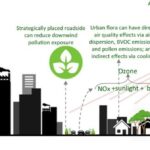The agricultural industry is undergoing a significant transformation, thanks to the advancements in greenhouse farming technology. These innovations are not only optimizing crop production but also paving the way for sustainable farming practices. By integrating cutting-edge technologies, farmers and agriculturists are able to achieve higher yields, reduce environmental impact, and ensure food security. This article explores the latest developments in greenhouse farming, highlighting how these innovations are revolutionizing the sector.
Precision Agriculture and IoT
One of the most impactful innovations in greenhouse farming is the adoption of Precision Agriculture (PA) and the Internet of Things (IoT). PA leverages data analytics and IoT devices, such as sensors and drones, to monitor and manage the micro-climate conditions within greenhouses. These technologies enable farmers to precisely control temperature, humidity, light levels, and CO2 concentration, optimizing plant growth and reducing resource waste. IoT devices can also automate tasks like irrigation, fertilization, and pest control, further enhancing efficiency and productivity.
Hydroponic Systems
Hydroponic systems represent a leap forward in water-use efficiency and plant nutrition management. By allowing plants to grow in a water-based, nutrient-rich solution without soil, hydroponics reduces water usage by up to 90% compared to traditional agriculture. This system also facilitates faster plant growth and higher yields, as roots have direct access to nutrients and oxygen. Moreover, hydroponics can be implemented in controlled environments, minimizing the risks of soil-borne diseases and pests.
Artificial Intelligence and Machine Learning
Artificial Intelligence (AI) and Machine Learning (ML) are at the forefront of agricultural innovation, offering unprecedented insights into plant health and development. AI algorithms can analyze data from various sources, including cameras and sensors, to detect diseases, nutrient deficiencies, and pests at early stages. This proactive approach allows for timely interventions, reducing crop losses and chemical use. ML models can also predict crop yields and optimize harvest schedules, ensuring maximum efficiency and reducing waste.
Vertical Farming
Vertical farming takes greenhouse technology to new heights, quite literally. By stacking plants vertically, this method significantly increases yield per square foot, making it an ideal solution for urban areas where space is at a premium. Vertical farms can operate year-round, unaffected by external weather conditions, providing a constant supply of fresh produce. The controlled environment also eliminates the need for pesticides, contributing to cleaner, healthier food.
Renewable Energy Integration
The integration of renewable energy sources, such as solar and wind power, into greenhouse operations marks a significant step towards sustainability. These green energy solutions can power lighting, heating, and cooling systems, reducing reliance on fossil fuels and lowering greenhouse gas emissions. Furthermore, the excess energy generated can be stored or fed back into the grid, further enhancing the environmental benefits of greenhouse farming.
Enhanced Lighting Solutions
Advancements in LED lighting technology have revolutionized the way greenhouses are illuminated. Modern LED systems can mimic the sunlight spectrum, providing plants with the optimal wavelengths for photosynthesis. These lights are energy-efficient, have a longer lifespan, and their intensity and color spectrum can be adjusted according to the plants’ growth stages. This tailored lighting approach improves plant health and productivity, contributing to higher yields.
Integration of Industrial Heaters
While the focus of greenhouse technology often leans towards cutting-edge digital and biological innovations, the role of more traditional equipment like industrial heaters remains pivotal. These heaters are essential for maintaining optimal temperatures, especially in cooler climates or during winter months. Modern industrial heaters are becoming increasingly efficient, with some models capable of utilizing renewable energy sources or recovering heat from other processes. This not only ensures the necessary warmth for plant growth but also aligns with the sustainability goals of modern greenhouse farming by minimizing energy consumption and carbon footprint.
Robotics and Automation
Robotics and automation technology are transforming labor-intensive tasks within greenhouses. Automated systems and robots can perform a variety of tasks, including planting, pruning, harvesting, and packaging. These technologies not only improve labor efficiency but also reduce the risk of plant stress and disease transmission by minimizing human contact. Furthermore, robotics can be programmed to operate around the clock, increasing productivity and enabling faster response to plant needs.
Conclusion
The innovations in greenhouse farming technology are revolutionizing the agricultural sector, making it more efficient, sustainable, and productive. From precision agriculture and IoT to hydroponics and vertical farming, these advancements are addressing the critical challenges of modern agriculture, including water scarcity, land use, and environmental degradation. As these technologies continue to evolve, they promise to further enhance the viability of greenhouse farming as a key solution for future food security and environmental sustainability. The integration of traditional and modern practices, such as the use of industrial heaters alongside renewable energy sources, exemplifies the holistic approach required to achieve these goals. As the world moves towards a more sustainable and efficient agricultural future, the innovations in greenhouse farming technology will undoubtedly play a central role.


